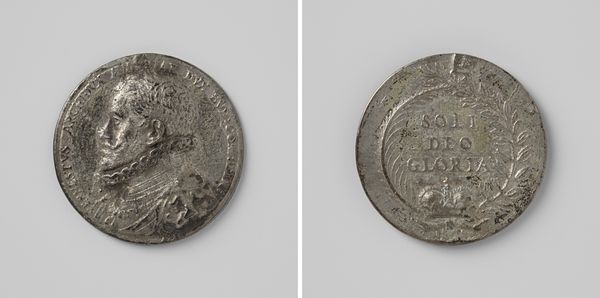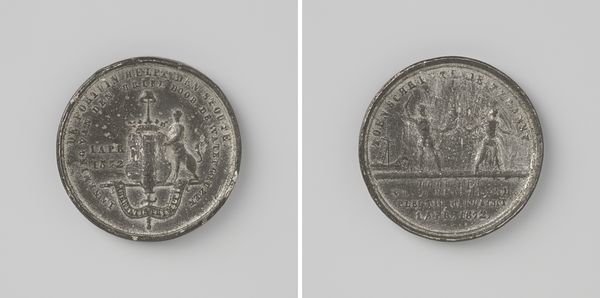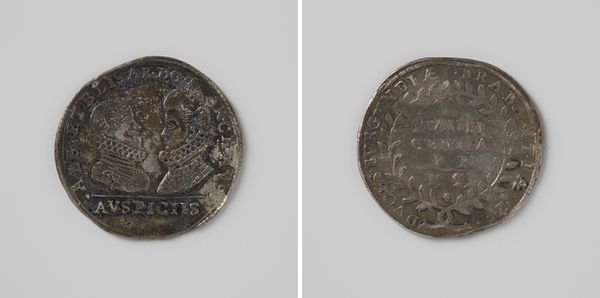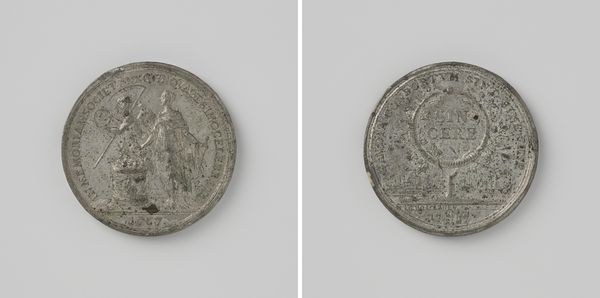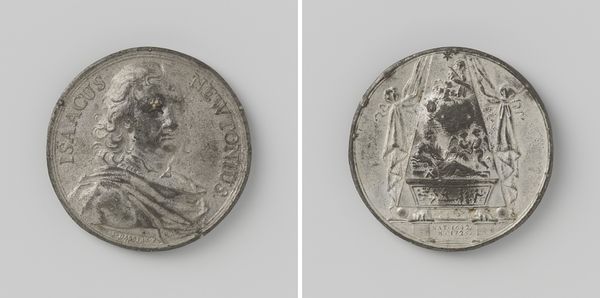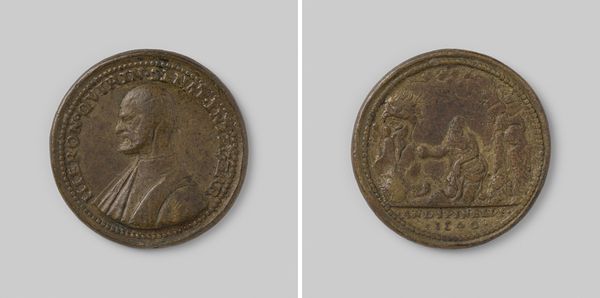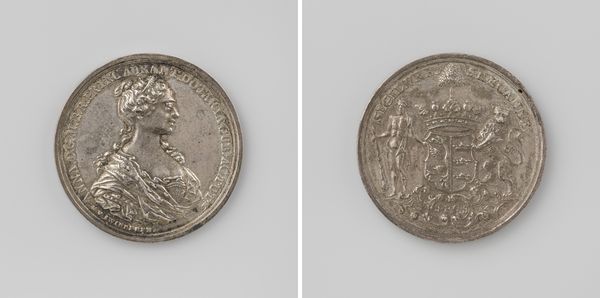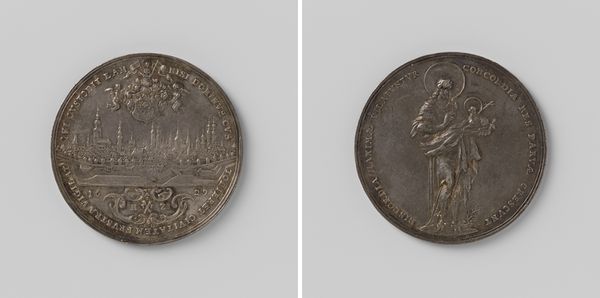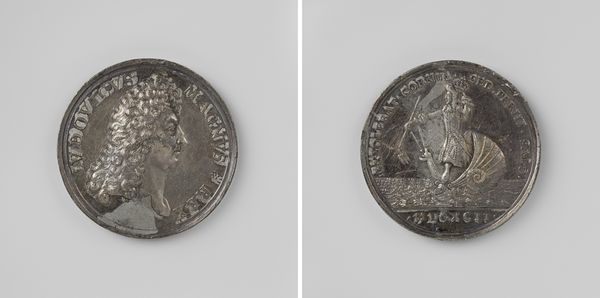
metal, relief, sculpture
#
portrait
#
neoclacissism
#
metal
#
sculpture
#
relief
#
sculpture
#
history-painting
#
erotic-art
Dimensions: diameter 3.7 cm, weight 10.10 gr
Copyright: Rijks Museum: Open Domain
Editor: Here we have the "Omwenteling van 1795", a metal relief from 1795 currently held at the Rijksmuseum. It’s quite striking; a galloping horse dominates the composition. It feels powerful, almost defiant. What’s your take? Curator: That power, that defiance, is absolutely central. Think about 1795 – a period of upheaval. This piece is not just a portrait; it's a symbol. What do you make of the inscription? Does it offer any clues about the broader context? Editor: It says "VRYHEID. BLYHEID.". That's Dutch for freedom and… cheerfulness? Curator: Exactly. And isn't it fascinating how these seemingly disparate concepts are linked in the context of revolution? It speaks volumes about the desires and anxieties of a society undergoing radical transformation. It forces us to question: for whom was this freedom intended, and whose cheerfulness was being celebrated? Editor: So, the horse isn’t just a horse, but a symbol of the revolution? Curator: Precisely! It’s a carefully constructed piece of propaganda, intended to sway public opinion. We have to deconstruct these narratives and understand their ideological underpinnings, and look for absences, silences and elisions. Consider, for example, who *isn't* represented. Who is absent from this vision of “freedom and cheerfulness"? Editor: It's true. We see only the triumphant image, but the realities might have been more complex, or even contradictory. This medal’s not just art; it’s a statement. Curator: Exactly. And art is never neutral. It’s always engaged in a dialogue with power, identity, and the politics of its time. Examining those connections is the real reward.
Comments
No comments
Be the first to comment and join the conversation on the ultimate creative platform.
